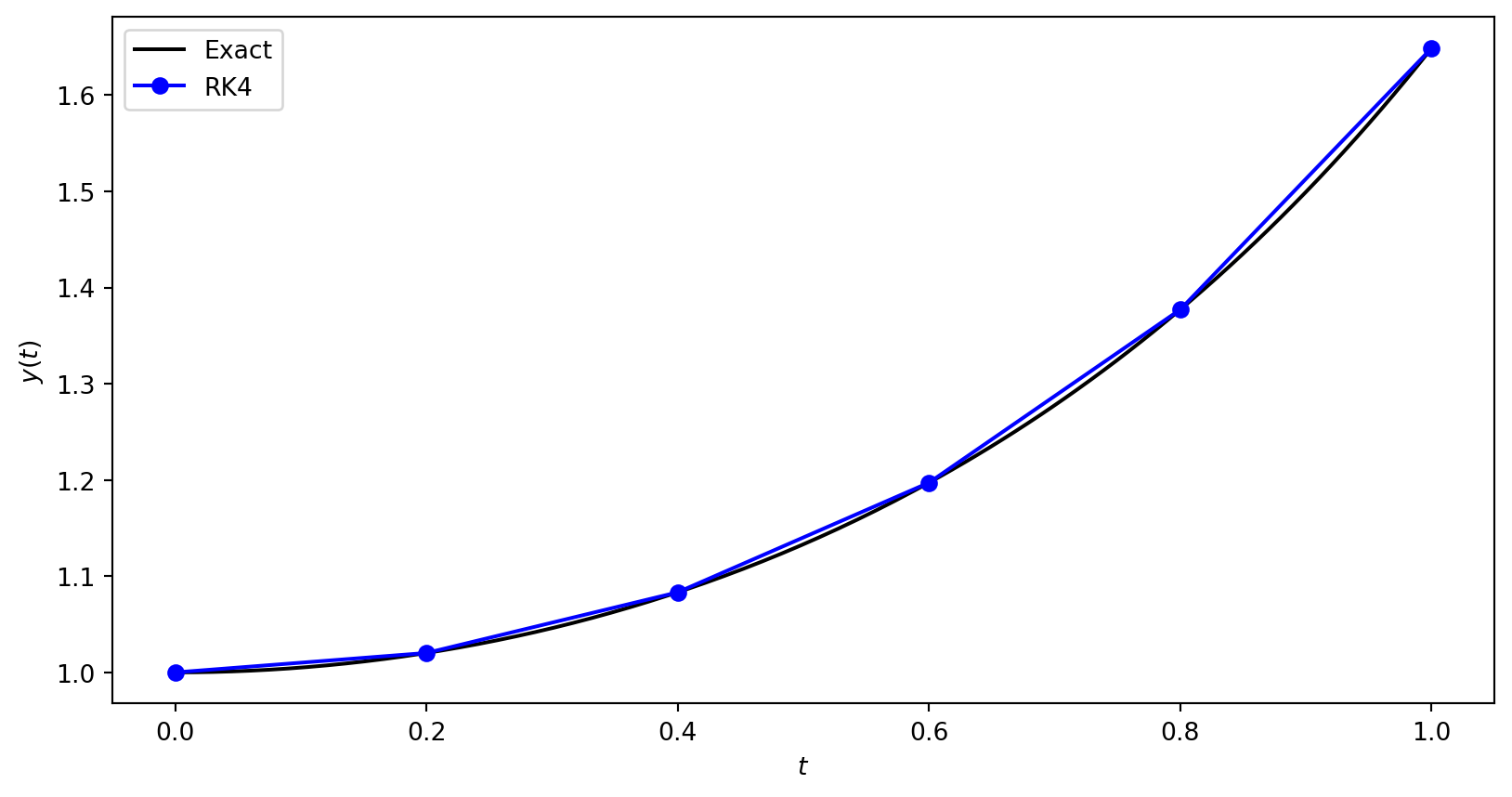Inputs A first-order ODE of the form \(y' = f(t, y)\), a domain \(t \in [t_0, t_{\max}]\), an initial value \(y(t_0) = y_0\) and a step length \(h\)
Outputs \((t_0, t_1, \ldots)\) and \((y_0, y_1, \ldots)\)
- \(nsteps \gets \left\lfloor \dfrac{t_{\max} - t_0}{h} \right\rfloor\)
- For \(n = 0, \ldots, nsteps\)
- For \(i = 1, \ldots, s\)
- \(k_i \gets f(t_n + c_i h, y_n + h (a_{i1}k_1 + a_{i2}k_2 + \cdots + a_{i,i-1}k_{i-1}))\)
- \(y_{n+1} \gets y_n + h (b_1k_1 + b_2k_2 + \cdots + b_sk_s)\)
- \(t_{n+1} \gets t_n + h\)
- Return \((t_0, t_1, \ldots)\) and \((y_0, y_1, \ldots)\)




